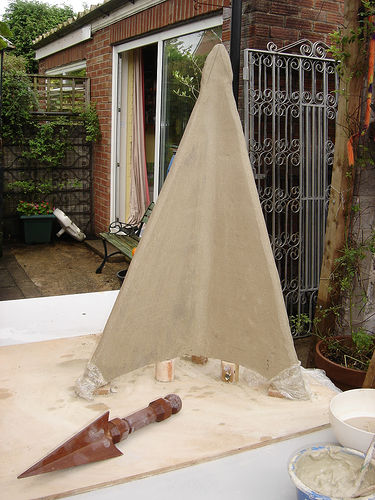
Craft retreat 2005
– the ceramic phurba blades
The three clay blades of the phurba are seen here resting on their base. This was just before the tips of the blades were to be shaped into a sharp point. The three blades of the phurba symbolically pierce the fabric of attraction, aversion and indifference. The phurba, as a wrathful means of liberating dualistic distortion, is especially connected with the water and air elements – the practitioner impales his or her own neurosis in order to liberate the basic fear of the non dual state.
The shape of this particular phurba is based on the design of Ngak’chang A-kyong Düdül Dorje’s “Nine Enriching Phurbas” as per the wooden phurba seen resting on the table beside the blades. The Aro gTér contains styles of phurbas connected to each of the Buddha karmas (pacifying, enriching, magnetising and destroying) and this particular shape is linked to phur-gön cham, or the dance of the phurba protectors, as well as to the dance of the elements.
